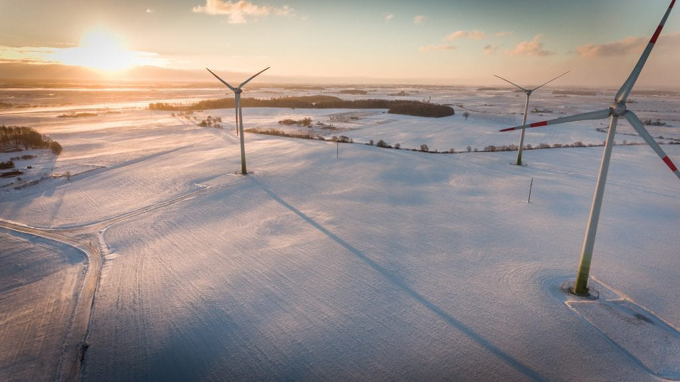
Hello, I’m Kitty. I’m a consultant in Xodus Group’s Renewable Energy team where I predominantly do research into offshore wind supply chains and stakeholder engagement, plus any other odd bits and bobs required by the Powers That Be.
Last week, Texas experienced four days of bitterly cold darkness as its grid struggled to cope in the face of two winter storms. As temperatures plummeted to -19°C, demand for heat understandably surged and supply failed to keep up. To preserve the grid, ERCOT (the regulator), initiated rolling blackouts to maintain frequency and prevent the whole grid from dropping offline.
Unfortunately, for most people these blackouts weren’t rolling but prolonged. Millions were left for days without heat and light. Pipes froze and burst, causing widespread water shortages. Food rotted in warming freezers and refrigerators. Many were faced with the impossible choice of staying put and potentially freezing or trying to travel the treacherous roads to places that still had power and congregate in the midst of a global pandemic. 32 people are known to have died. President Biden declared it a major disaster.
Right-wing pundits and Republican officials were quick to blame wind energy. Governor Greg Abbott appeared on Fox News to use the Texan tragedy as evidence against any Green New Deal policies, and the Agriculture Commissioner Sid Miller stated that “We should never build another wind turbine in Texas”. The same instinct to blame wind happened in the aftermath of the London Blackout in August 2019 – an admittedly minor affair compared to what Texas has been suffering, but still the largest blackout the UK had experienced for a decade. What’s particularly frustrating to someone who works in wind is that in both cases it simply wasn’t true.

Yes, wind generators failed, and this contributed to the problem. But so did their fossil fuel counterparts. In London, the blackout was triggered by two power stations – gas and then wind – disconnecting from the grid in quick succession. In Texas, where wind accounts for up to 23% of electricity, the cold weather also took out gas, coal, and even nuclear power plants as pipes froze and cooling systems shut down. So why only blame wind?
I suspect that the instinct to blame wind comes from a misplaced belief that renewable energy is “intermittent” and less reliable. The truth is that renewable energy is more variable but it’s not the case that we are oblivious to when the sun will shine or the wind will blow. Variation can be and is accommodated. I also suspect that it is inherently defensive. Fossil fuels are frequently painted as the bad guys but the consistency of a certain level of supply is one of the areas where they are arguably stronger than renewables (this will change as storage technology improves and costs fall). When renewable energy fails, it is an opportunity to remind everyone that fossil fuels are still needed; that despite climate change and the need to decarbonise – a fact that poses a significant threat to those whose livelihoods depend on fossil fuels – they still have a positive role to play.
Such defensiveness isn’t helped by proponents of wind, such as myself, gathering as much data as possible as quickly as possible to show that it’s not wind’s fault and that fossil fuels are at least as equally to blame (the irony that this is exactly what I have done so far in this blog is not lost on me). Again, I suspect this is defensive on our part. For its entire existence, the wind industry has had to fight against criticism from incumbents. Criticism that it’s too unreliable (prediction is improving), too expensive (costs are plummeting), and that it’s not needed (it is no secret that certain fossil fuel companies have fuelled climate denial and lobbied hard against efforts to decarbonise). This narrative also poses a threat to the wind sector and so its proponents can be fiercely protective, especially when faced with criticism by those who similarly failed to rise to the occasion.
While both sides adopted their entrenched positions and embraced the familiar battle, the true cause of the Texas blackout slowly came to light. The reality is that all types of generation failed and none of them needed to. Winterising of power equipment, both renewable and non-renewables based, frequently happens in places with much colder climate. And, to be fair, Texas is normally able to handle the cold weather it usually experiences. Last week was particularly rare both in the duration of the cold weather (4 days, as opposed to the 24-48 hours that would normally be expected) and the extent, with the entire Texan grid experiencing the same inclement weather and challenges simultaneously. Unlike the rest of the USA where states are either part of the Western grid or the Eastern grid, Texas lives up to its Lone Star name and has chosen to have its own grid. While this means that it is free from Federal regulation, it also means that the grid is less resilient and in times of trouble can’t rely on supply from elsewhere. With all power sources struggling in the cold and struggling for so long, there wasn’t enough supply in the system to meet the growing demand and so it shut down.
Grid resilience is increasingly going to become of paramount importance as extreme weather events become more common with climate change. In Texas, as across the developed world, grid infrastructure is ageing and requires significant investment. There will be debates about whose responsibility that is and who should pay, but that’s a subject for a future blog. Right now, while still dealing with the aftermath of last week’s disaster, it’s important to learn lessons to be better prepared next time. The narrative of fossil fuels versus renewable energy is a false dichotomy that serves no one. Both are currently needed. Both need to be equipped to deal with extreme weather events. Indeed, having a mix of types of energy generation increases the resiliency of the grid as they’re able to perform in different types of conditions. Significant planning is required to develop an energy system that is fit for purpose, both now and in the future. If this happens, maybe next time we can discuss its merits with the lights on rather than screaming at each other in the dark.
KeyFacts Energy Industry Directory: Xodus Group
 KEYFACT Energy
KEYFACT Energy